
Like many modern fitness enthusiasts, I first approached fitness in a very fragmented way. I used many exercises and different pieces of equipment to work on each separate muscle group with an individual focus. I also had a fragmented approach to conditioning. I had exercises for strength, exercises for endurance, exercises for flexibility, exercises for balance, exercises for rehab, and for muscle activation. I even had the same approach to my diet–individual supplements for protein, fats, carbs, vitamins and minerals.
This approach was like taking a chain and trying to bend each single link at a time.
 As you can imagine, this approach has some serious disadvantages. While it is possible to emphasize a few choice links, the amount of actual workload you can place on those links is very limited. Compare this with pulling on the whole chain with your entire body, and placing far more total tension on each link.
As you can imagine, this approach has some serious disadvantages. While it is possible to emphasize a few choice links, the amount of actual workload you can place on those links is very limited. Compare this with pulling on the whole chain with your entire body, and placing far more total tension on each link.
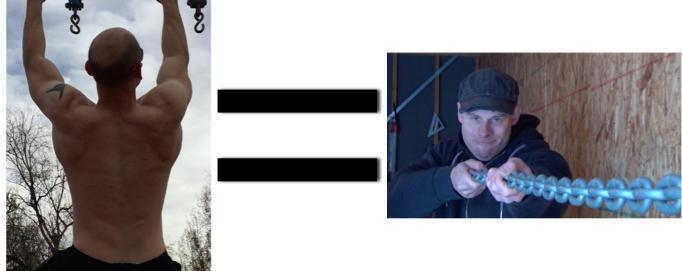
The fragmented approach also uses up a lot of time and energy when starting at one end of the chain and pulling on each link for 5 minutes before progressing. It took a lot of time and energy to work down the entire chain. But, when I started pulling on the entire chain, I got much better results even though my total workout time and personal investment was substantially reduced. If I pulled the whole chain for just 15 minutes, the workout might be shorter but the total time and tension on each link was far greater.
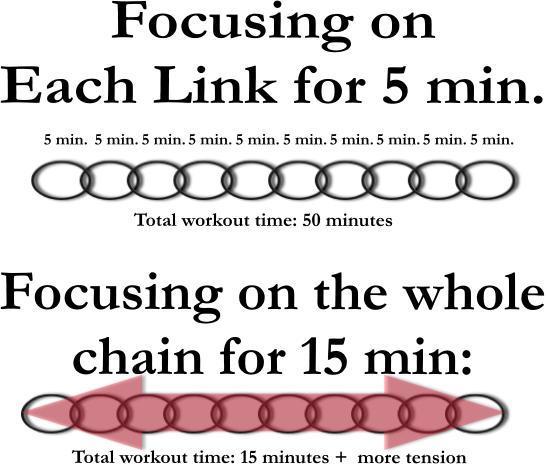
The other disadvantage to my segmented approach was that it caused imbalances to crop up over time. Like many eager young bucks in the gym, I started off wanting to grow bigger and stronger in some areas, like my arms and chest while other muscles like my hips and shoulders were neglected. This also went for certain aspects of my training where I was more interested in things like strength and power but not very interested in balance or flexibility. As a result, I had large imbalances due to less emphasis on certain links in my chain and an over emphasis on others.
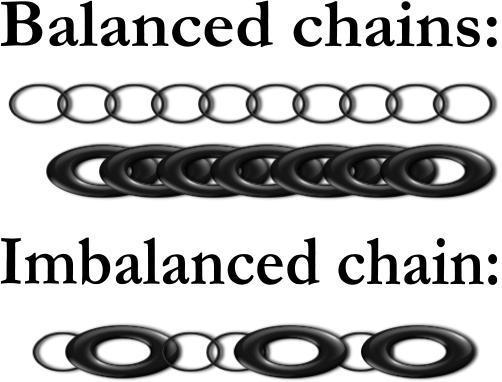
These imbalances caused many injuries and progress in my training became almost impossible. I didn’t know it then, but Mother Nature herself was holding me back. Over the years, I’ve learned that Mother Nature doesn’t care if someone is strong, fast and ripped or fat, slow and weak. Her priority is to keep the body in a state of balance or homeostasis. As I strengthened certain links Mother Nature would force me back into homeostasis by causing pain and fatigue. She weakened those strong links to balance them with the weaker ones. Even though this would weaken my entire body, nature’s priority was balance.
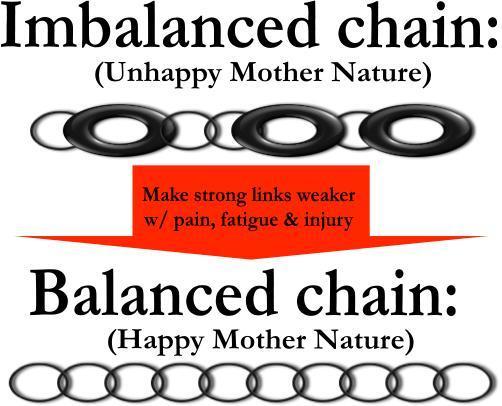
When I started with bodyweight training I was suddenly focusing on a more holistic approach that required me to develop all of my links at once. The results were simply astonishing! Pain evaporated like a puddle in the desert. Strength and speed came in waves and sports performance hit all time highs. Because I was pulling on entire chains, my weaker links finally started to get stronger. Now the powerful law of Homeostasis was helping me rather than holding me back. As those weak links became stronger they fell in line with the stronger links and reached that state of balance. Now I was balanced by making weak links stronger instead of forcing strong links to get weaker.
My training was also only taking a fraction of the time and energy compared to my previous approach.

Looking back, I recognize just how technically divergent my training was. Sometimes, I was even trying to limit the involvement of those weaker links! I used various supports and wraps to ensure my weak links were not holding me back. If I was trying to work my biceps, I isolated them and made sure not to use my back and shoulders. I used to think this meant I was really focusing on my goals, but now I realize I was just creating more imbalance and the potential for injury. I was also holding back my stronger links.
Short term sacrifice for long term gain
Using the entire chain is sometimes frustrating for people who are new to Progressive Calisthenics. Most of the time this frustration comes from folks who have built up some links to be stronger than others through fragmented training.
A chain is only as strong as its weakest link, so when many people start to pull on the entire chain they often get feedback from the weaker links. I hear this a lot when someone tells me that we’re doing “triceps push ups.” Or if I coach them to a narrow-stance squat, and they tell me it’s not a leg strengthening exercise but rather a balance exercise.
To a large degree, these individuals are correct because it is a triceps push up or it is a balance exercise because for that individual those are the weak links within their chain. However if they have the discipline to pursue the training long enough they will find that those links become stronger and then the next links will become the priority in their training. When this happens the triceps push up suddenly becomes a shoulder push up and the squat is no longer about balance but maybe more about flexibility or perhaps strength in the the muscles in the front of the shin.
The trick is sticking with the training long enough for the weaker links to catch up. It can take a lot of self control because someone might be focused on feeling their pecs get a pump, or their quads burning that they abandon the full chain exercises for a fragmented approach that easily satisfies the sensation of pumping up those target muscles. The down side is that while pulling on a single link may feel more focused, the long term potential of developing that link is limited.
Here’s a quick example:
Two guys want to get ripped for next summer’s beach vacation. Mr. Push Up can’t get to a gym so he’s stuck doing push ups in his basement. His buddy, Mr. Pec Fly, gets a membership to Bob’s Emporium of Pecs and Biceps and heads straight to the Chest-o-matic 9000 pec machine.
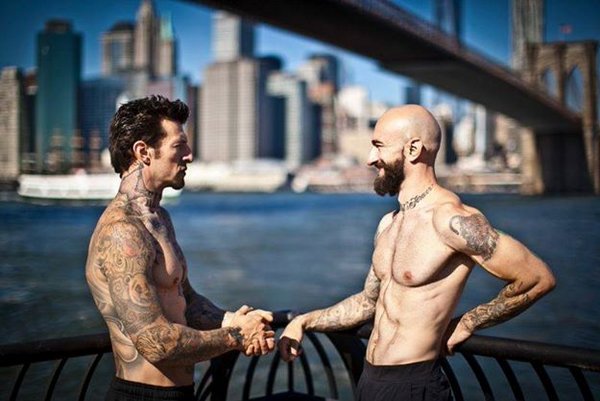
At first it seems like Mr. Pec Fly has made the right choice. Every week he keeps adding weight to his machine and his chest is looking strong and pumped. Meanwhile, Mr. Push up is still struggling to build his shoulder stability and his triceps seem to be getting more of pump than his chest. However as beach season approaches, Mr. Pec Fly starts to wake up each morning with nagging aches in his right shoulder and can’t lift quite as much weight on the pec fly machine. He starts losing his motivation to train and his results back slide. Meanwhile Mr. Push Up has finally strengthened his weaker links, and now his push ups are pumping up his chest like crazy. Not only that, but his shoulders and triceps are also looking great and he’s sporting a hint of a 4-pack. Mr. Pec Fly wishes he could work his triceps but his sore shoulder won’t let him use any of the push-down machines and he usually skips his abs because he doesn’t have the time and energy at the end of a long workout to do a bunch of core exercises.
By mid-summer Mr. Pec Fly has quit the gym and keeps wearing loose fitting T-shirts while Mr. Push Up keeps looking for excuses to take his shirt off. He not only looks great, but feels great because all of his links are strong and healthy. While Mr. Pec Fly feels like his body is fighting him on every rep, Mr. Push Up senses that his body wants to keep getting stronger. He’s even come to expect progression with every workout! He’s working with his body, not against it.
While the push up is often used as a strength exercise for the chest and arms, it demands the strength of the core, hips and hands. It also requires flexibility in the wrists, stability in the shoulders, plus endurance, breathing, coordination and even awareness of where you are in space. As you progress in your training, you will not only develop more strength and muscle, but the advanced techniques also demand more of these other aspects of your conditioning. Technical convergence is the idea that the level of resistance you can place on a muscle is also directly in proportion to other aspects of your fitness required for you to perform a particular technique.
The technical convergence of progressive calisthenics requires every link to be strong. If any links are weak, they will be strengthened thus enhancing the stress the rest of the links in the chain can endure.
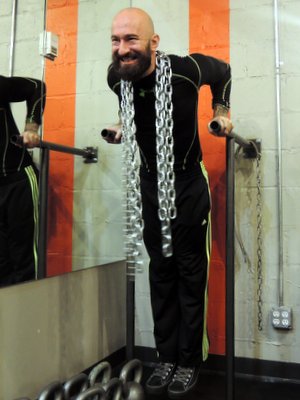
People often tell me that the great thing about weight lifting is that you can increase resistance simply by placing more weight on the bar or moving a pin on a stack. I used to believe that adjusting the resistance with such ease was great, but my tune has changed. I spent so many years focusing on adding weight to the bar that I couldn’t tell that my technique was actually getting worse. I was technically divergent! Now I think “Yes, you can increase the resistance but you don’t have to improve anything other than your strength.” With bodyweight exercise, you have to earn that resistance, which is a built in safeguard to ensure you can control and use it in the most productive way.
Don’t avoid your weak links, seek them out and give them the love they deserve with the Big Six. They work every tiny link from one end to the other.
Right now, it’s -5 here in Denver but I promise you beach season is right around the corner and your weak links aren’t going to get strong on their own. The clock is ticking!
Tick tock………..
****
Matt Schifferle a.k.a. The Fit Rebel made a switch to calisthenics training 5 years ago in an effort to rehab his weight lifting injuries. Since then he’s been on a personal quest to discover and teach the immense benefits of advanced body weight training. You can find some of his unique bodyweight training methods at RedDeltaProject.com.
